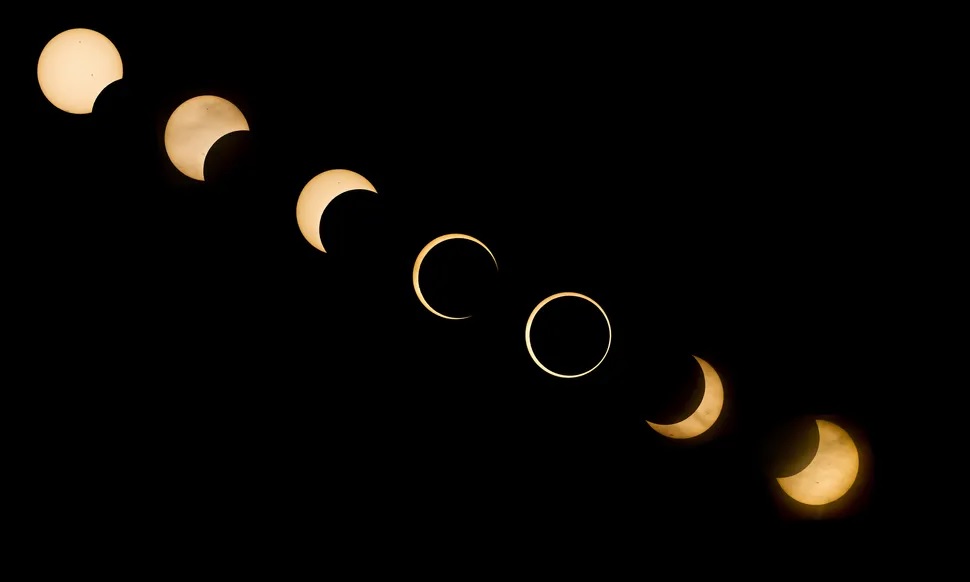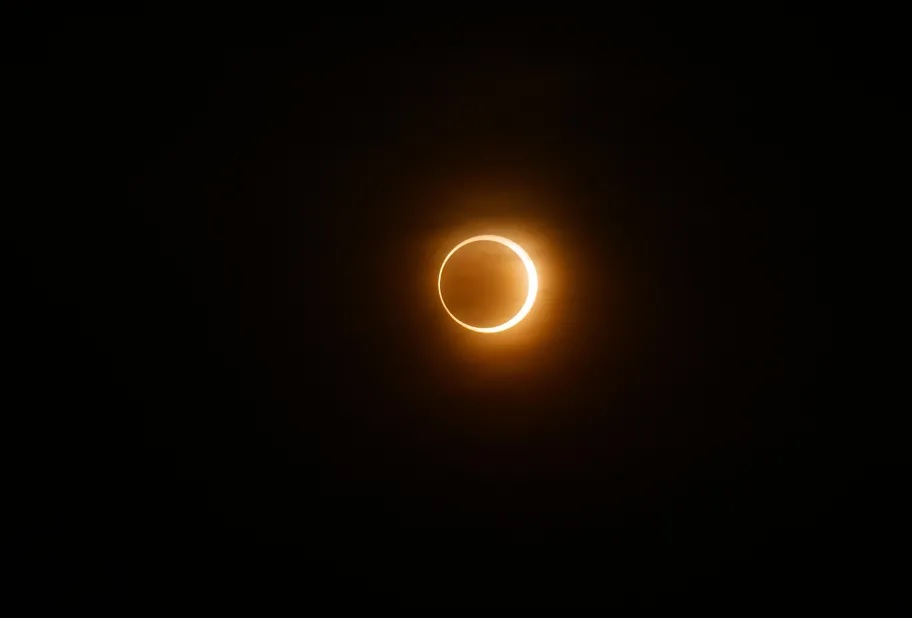Witness the Dazzling ‘Ring of Fire’ Solar Eclipse: Unmissable Celestial Show This Saturday!
Ring of Fire Solar Eclipse: On Saturday, October 14, a remarkable celestial event is set to unfold as the moon positions itself directly between the Earth and the sun, casting its shadow across our planet’s surface.
The shadow’s path will predominantly traverse the Western United States, Mexico, Central and South America, promising an awe-inspiring spectacle—an annular solar eclipse, often referred to as the “ring of fire.”

The spectacle will commence within the United States at 9:13 a.m. PT (12:13 p.m. ET) and journey from Oregon to the Gulf Coast in Texas, making appearances in Nevada, Utah, and New Mexico along the way. Portions of California, Idaho, Colorado, and Arizona will also have a glimpse of this celestial show. It will conclude in the US at 12:03 p.m. CT (1:03 p.m. ET).
If you’re unable to venture into the 150-mile-wide path of annularity, fret not, for you can still witness a partial view of the eclipse. You may also read Dragon Ball Daima Akira Toriyama’s.
As the eclipse progresses beyond the United States, it will trace a path across Mexico, Belize, Honduras, Panama, and Colombia, ultimately concluding off the Atlantic coast of South America at Natal, Brazil.

For instance, regions within the 80-90% range encompass parts of California, Nevada, Oregon, Arizona, Utah, Wyoming, Colorado, New Mexico, Oklahoma, Texas, and Idaho.
Slightly further from the path of annularity, states within the 70-80% viewing range include parts of Washington, Montana, Idaho, Wyoming, Colorado, Kansas, Nebraska, Oklahoma, Louisiana, Texas, Arkansas, California, and Arizona.
In the United States, the annular eclipse is set to commence at 9:13 a.m. PDT in Oregon and conclude its visibility in Texas at 12:03 p.m. CDT before transitioning to Mexico, Guatemala, Belize, Honduras, Nicaragua, and Panama, as per NASA’s guidance.
The partial eclipse, however, will commence and conclude later. To provide an example, in Eugene, Oregon, the partial eclipse will begin at 8:06 a.m. PDT, while annularity won’t commence until 9:16 a.m., reaching its maximum approximately two minutes later. The partial eclipse in Eugene is slated to conclude at 10:39 a.m. PDT.
In April, a total solar eclipse is anticipated, with its path spanning from Texas to Maine. In regions within this path, complete darkness will briefly prevail as the moon fully obscures the sun, allowing for a moment.
When observers can safely remove their protective eyewear to witness the sun in complete darkness. It is crucial to emphasize that the eyewear must be promptly repositioned before the sun starts emerging once more. You should also check Unlocking Dark Secrets in ‘The Fall of the House of Usher’.
During this forthcoming eclipse, virtually everyone within the contiguous 48 states will experience a celestial spectacle, even if it manifests as just a slight diminishment of the sun’s radiance, akin to what Southern California is likely to witness.
The solar eclipse is anticipated to partially obscure a substantial portion of the sun’s rays on Saturday morning, potentially impacting solar energy generation in the region, as noted by Southern California Edison.







